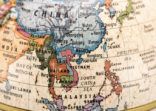The sustainable debt market in China is set to flourish in line with climate policy priorities that will have significant implications for high-emission sectors.
After issuance rose to $65.5bn in 2021, based on Fitch data, the firm expects further growth as more specific carbon-neutrality roadmaps are issued in 2022.
“China’s climate policies will have significant implications for high-emission sectors such as power, industrials and energy,” said Nneka Chike-Obi, the firm’s Apac head of ESG research.
The firm now expects more details from various ministries about the near-term steps to take to meet climate pledges by 2030 and 2060.
Greening China’s capital markets
Green bonds were the main contributor of Chinese green, social and sustainability (GSS) bond issuance in 2021.
Total green bond issuance hit $56bn, making China the fourth-largest green bond market globally after Germany, France and the US.
Diversity in this segment of the market is also increasing. “The Chinese authorities’ policies have also led to new types of bonds in the ESG debt category, such as carbon-neutral bonds and sustainability-linked bonds,” said Chike-Obi.
It also notable that utilities companies beat financial institutions to become the largest green bond issuers in 2021, driven by the government’s pledge to reach peak carbon emissions by 2030 and carbon neutrality by 2060.
The role of corporate issuance is expected to continue growing, as regulations push companies to make more disclosures about the environmental and social impacts of their business operations.
Such developments in domestic ESG disclosure rules and growing interest from foreign investors may also help to reduce the gap between Chinese and international practices. These efforts may reduce misalignments over time.
Banking on growth
Although the share of issuance by companies and local governments is increasing, Fitch also expects banks to continue to play a key role in China’s green bond market.
This is for several reasons. Among them, financial institutions, particularly banks, are incentivised to grow their green finance activities. For example, China’s central bank in 2021 introduced tools to encourage banks to expand lending towards low-carbon and clean-coal projects.
Banks are also under more pressure from local regulators to consider the default risks of borrowers in carbon-intensive sectors that stem from climate risks.
In addition, supportive monetary policies n 2022 should encourage banks to increase lending to low-carbon projects.

















